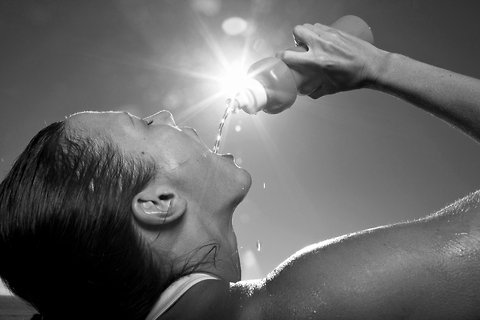6 Ways to Be Marathon Safe
Running marathons has become more and more popular over the years, making these 26.2 mile races appealing for less experienced runners. Runners that have been racing for ten years are much less likely to make the mistakes that virgin marathoners make. Preparation is the key no matter how long the distance. If you’re training for a marathon, consider this list of safety precautions:
1. Do the Work
It’s an obvious tip but none the less important. If you want to avoid an injury, big or small, do the work ahead of time. Before you even start training for a marathon, you should be able to run for 30 minutes without stopping. Borrow a marathon training regimen from a friend or search the internet for a good marathon training schedule and follow it. Make sure you take the recommended rest days as listed, especially as the runs get longer and you get closer to the race. The more training you do, the less likely you are to feel nervous, and as a result, you’ll have a clear head and hopefully an injury-free body come race day. The work includes proper stretching, which is crucial to staying healthy.
2. Hydrate Properly
The New York Times recently wrote about the frightening phenomenon of over hydration. Again, it’s a result of less experienced racers running marathons.
The New York Times reports:
Dr. James Winger is quick to point out that endurance athletes should avoid over hydrating. “The lesson is that you should drink only when you need to, when you’re thirsty," he says. “That is the best way to protect yourself against hyponatremia [over hydration]" and also against dehydration. “Thirst is a very reliable indicator" of your body’s actual hydration status, he says.
Again, this isn’t to say that you shouldn’t be hydrated, but listen to your body and drink when you’re thirsty.
3. Know the Course
The Chicago Marathon would be difficult to get lost on, but smaller races aren’t so simple. I ran a marathon on the Big Island of Hawaii that had just 200 participants in all. I know races, especially trail races, can be even smaller. If you’re running a smaller race, no matter the length, make sure that you’ve taken a good look at the course before race day.
4. Watch For Cars
This is most important for race training. You’ll likely have people directing traffic on the marathon day. But make sure during training you’re aware of your surroundings. Especially as you get up into the higher mileage, the mind can be lost in survival mode and entirely miss that utility truck barreling around the corner. Choose routes where you’re less likely to run into cars so there’s less of a chance you’ll get hit.
5. Don’t Disappear
Again, this isn’t likely going to be a problem in larger races, but in smaller races it could. Make sure if you run the race alone, you tell someone where you are. Wear your race bib so in the case something happens, you can easily be identified as a racer. Make sure emergency contact information can easily be found on your body in the event of an emergency, and that it's waterproof in case it rains.
6. Eat Right Before the Big Day and During Training
According to Marathon Rookie, marathon training nutrition should include 65 percent calories from carbohydrates, particularly complex carbohydrates. Ten percent should come from protein and 20 to 25 percent of your total calories should come from unsaturated fats. Don't ever starve yourself if you're training for a marathon; that can be a scary proposition.

Listen to your body and be cautious during training and on the big race day.